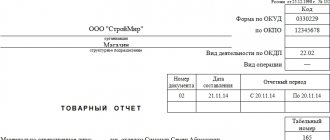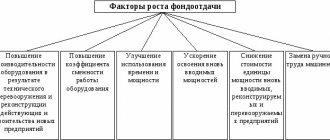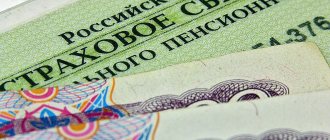The trademark designation represents a special recognizable symbolism made using words, images, symbols, images. A combined designation is often used; all this determines the exclusive right to a trademark. With the help of a trademark, you can individualize a certain product or service, which makes it easier to distinguish the product of a certain manufacturer from the product of competitors.
If a company's trademark defines the identity of that company, then it most often becomes a logo - the company's trademark.
In Russia, they often put the letter “R” framed by a circle - Ⓡ, which shows that the use of the trademark by another company is prohibited - it is protected by law, for commercial and other purposes to other companies. There are other designations, the letter “C” surrounded by a circle indicates that the product is the property of the company.
In foreign countries, a trademark is designated by a trade mark - “TM” or a service mark (service mark) - “SM”.
A logo allows customers to differentiate products or services from different companies and select them according to their preferences. If buyers of goods or services trust certain companies that have already proven good quality, they can be easily found by the company’s trademark.
The concept comes from the word “product”, which means that this logo is usually placed on objects: clothing, shoes or vehicles, on any goods.
When providing services, such as consulting, marketing or advertising, the trademark is already called a “service mark”.
If you want to register a trademark, then you have undeniable advantages over your competitors and gain the opportunity to expand your business.
Having a trademark, you can easily franchise your business and make a good profit. By the way, franchising is a popular type of business in the world; for example, McDonald’s has long been distributed by franchise. The whole essence of the company is to sell a brand name, the production of products is carried out under the brand name of this brand. Simply put, a franchise is a logo rental.
A registered trademark, especially with good brand promotion, helps increase the value of a company in a certain market segment and its prestige. If you want to sell a company, it will be worth much more with a well-known trademark than without it.
You can, having a trademark, rent out a business by concluding a special licensing agreement.
LLC, individual entrepreneur, closed joint-stock company, public joint-stock company and other legal organizations have the right to register. An individual in Russia does not have the right to register according to the law of the country.
Types of trademarks
Many people mistakenly believe that a trademark is only an inscription or logo of a company.
In fact, it can be like a musical composition, or a separate element of a product, or even a form of a product. Can be: light, sound, olfactory. An advertisement or scent may be intellectual property.
If, for example, you decide to release drinks in the same bottles in which the products are produced, then the company has the right to sue you and you will have to pay a fine for violation of rights.
A word trademark usually includes only the inscription; word marks make up 80% of all registered trademarks. For example, everyone knows.
A figurative trademark is a registered visual figure, picture, concrete or abstract image, with no verbal content.
A combined trademark usually includes an inscription and an image.
Words and images often act as complements to each other, but not always. An example of a word mark is “SONY”. “KFC” is already a combined one; it also has an image on it.
A combined trademark is more recognizable; in world practice, both combined and simply verbal ones are often used. So, decide for yourself which one is best for you.
Classification
| By object | branded (ordinary, prestigious); assortment (specific, brand). |
| According to presentation form: | alphabetic; verbal; volumetric; digital; figurative; combined |
| By type of government ownership: | individual; collective |
There are concepts: trademark, logo, trademark, commercial designation, brand
It may seem that all these words are similar, but they are not. Let's figure out what each of these concepts means.
A trademark is a feature of a product or service that emphasizes individual properties and is legally formalized. A trademark is a legal concept and is protected by law. It can be sold, donated or rented. The ownership rights are with the company.
A logo is a graphic image that helps consumers recognize a company offering a product or service. Logo refers to a graphic or design concept.
A trademark represents a set of individual characteristics of a product or service. This concept is similar to a trademark, but is not legally registered. Many people confuse trademark and trademark. Sometimes it happens that a company can create a trademark, which may already be someone else's trademark. In this case, the owners will sue this organization; the law states that there can only be one owner.
Commercial designation - represents individual features in the company name, for example, the “Slastena” confectionery or the “Orchid” salon.
Brand - represents a certain association among buyers of a given product or service. The brand may not be legally registered.
Where is the trademark used?
Everywhere in the world, the TM icon can be found everywhere on all types of products, in all industries. Copyright holders mark specific products, labels or packaging. Often the designation “ trademark ” can be found in advertising brochures, street banners, and advertising pages in the press. Entrepreneurs also tend to use the verbal designation of the mark in the name of the domain name of the site.
The owner of a brand (trademark) has the right to control its use by third parties.
Specialists of the linkmark.ru service are always ready to advise and help in any issues related to the registration and protection of trademarks in the Russian Federation. You can find out more about our services here.
Cost of registering a trademark
If you decide to register a trademark yourself, without resorting to the services of a law firm, then it will cost you approximately 40,000 - 50,000 rubles. Of this amount, you will pay 34,000 rubles for the certificate and state fee, and 15,000 - 40,000 rubles for legal services.
State duty includes:
- examination
- registration
- trademark certificate
Registration of a trademark usually takes from 9 months to 2 years, and sometimes a longer period of time.
Trademark: terms and names
The phrase “trademark” has many synonyms; along with this term, the expression “trademark” is also used. This name comes from the English “trade mark”. In business and everyday life, this synonym is used quite often, but it does not appear in the norms of Russian laws. According to the current legislation in the Russian Federation, such concepts as “service mark” and “trademark” are defined.
A striking example of a synonym for the expression “trademark” is the term “brand”. But a brand is more of a marketing concept and carries a slightly different, broader meaning. In other words, a trademark is rather one of the main components of a brand.
Use of trademarks
Registration of a trademark on the territory of the Russian Federation gives the right to its protection only in our country, that is, the so-called territorial principle of protection applies. According to this principle, trademark owners can use their exclusive right in the country or countries where the registration procedure was carried out. Therefore, if a business owner is interested in entering the international market, then he needs to register his intellectual property in these countries.
The owner of a trademark has a list of rights, the main one being the right to use the mark to designate the products he produces independently. In this case, the mark can be applied to the product or its label, packaging, during production, sale, display, transportation and storage. In the legislation this is designated by the phrase “introduction into civil circulation.” He also has the right to display his trademark on documentation related to the introduction of products into civil circulation, on various announcements, advertising, shop windows and signs, as well as on the Internet, including in the domain name
Duration of the exclusive right to a trademark
Here is an excerpt from the law on trademarks of the Civil Code of the Russian Federation (part four) dated December 18, 2006 N 230-FZ (as amended on May 23, 2018)
- The exclusive right to a trademark is valid for ten years from the date of filing an application for state registration of a trademark with the federal executive body for intellectual property or, in the case of registration of a trademark under a separate application, from the date of filing the initial application.
- The validity period of the exclusive right to a trademark may be extended by ten years upon the application of the right holder submitted during the last year of validity of this right.
- Extension of the validity period of the exclusive right to a trademark is possible an unlimited number of times.
Why does registration take so long?
Firstly,
because FIPS is the only body that registers trademarks from all over Russia, marks of foreign entities that conduct commercial activities in our country, as well as marks that are in the process of international registration. FIPS does not have regional branches, so the entire workload is concentrated in Moscow at 30 Berezhkovskaya Embankment.
Secondly,
The examination of the applied designation by FIPS is divided into several stages:
- Experts check the compliance of each product and each service with the current edition of the International Classification of Goods and Services (International Classification of Goods and Services for which Trademarks are Registered);
- Then the designation is checked against databases of already generated resources (FIPS must make sure that there really is nothing similar and that the designation is unique);
- There are situations when the opinions of experts differ (FIPS believes that there are obstacles to registration, but the lawyer who did the check refutes the opinion of the FIPS expert) - and the time comes for correspondence between the expert of the government body and the lawyer who practices issues of trademark registration. But any government action has a deadline. The period for correspondence with experts ranges from 2 to 6 months, depending on the nature of the action (for example, 3 months are allocated for providing high-quality prints with a designation, and it is necessary to respond to a notification about identified similarities within 6 months). Moreover, each expert receives not just one designation, but dozens and hundreds. But the results of the examinations must be of absolutely high quality and objective in all respects. Therefore, the registration of trademarks takes such a long time.
Instructions for registering a trademark
Decide on the idea and logo (develop creative)
The breaded logo must have the following qualities:
Individuality - it should not repeat the names or logos of any already well-known companies;
Memorability - come up with a trademark that will evoke positive emotions in future consumers associated with quality, service, and benefits;
Simplicity - should be easy to be quickly remembered by both children and elderly people;
Harmony - should be easily perceived by ear and not cause negative associations among future consumers;
Unambiguity - the company’s activities must correspond to the logo. Don't allow something like what you are going to sell, for example, computers, to have children's toys on the logo. If you are going to change your type of activity over time, then it is better to make the logo neutral, with some distinctive feature from competitors, but so that consumers recognize it;
Ease of application - You will have to depict the sign on different surfaces, from a small notepad to a large billboard. Try to practice applying it to different surfaces and evaluate how it looks on them;
Identity of writing in English - in the future you will have to run a website offering goods, try writing it in English letters and see if it looks attractive enough.
If you take all these recommendations into account to create a style, then you are more likely to be guaranteed success!
If you look at the trademarks of all well-known companies, you can see that they all comply with these recommendations.
Decide on ICGS classes
The International Classification of Goods and Services (ICGS) is used to register a trademark and to determine future activities. It presents 45 classes of activity for conducting business by an individual entrepreneur or companies. Classes 1-34 are goods, classes 35-45 are services.
You can choose any class or its individual directions. But please note that for each class you choose, you will need to pay separately; the more classes you choose, the more you pay.
Submit an application to Rospatent
You need to download the template on your computer, then fill it out and provide the image you want to register.
In the future, it will be possible to track the status of the application by FIPS and number.
Formal examination
This examination involves checking the documents you provide for registration for compliance and accuracy of information.
At this stage, you may be refused to register a trademark, without even indicating the reason for the refusal, or you may be informed of successful registration.
If the formal review approves the order, the approval will be stamped with the application submission date. If someone has submitted a similar application at the same time as you, then if it is submitted just a day earlier, it will be approved, and the competitor’s application will be considered invalid.
Examination of the claimed designation
At this stage, the trademark application will be analyzed for similarity to existing trademarks. If it turns out that a similar trademark to yours already exists, or it is very similar to any other mark, then you will be refused.
But even if you are refused, do not be upset. It will need to be slightly modified, minor changes made, and registration will continue.
This examination usually lasts several months.
Trademark registration and obtaining a certificate
If you have successfully completed all stages, then the trademark is considered registered and you will receive a certificate from Rospatent. You will need to pay a state fee for it.
Now you have your own trademark , you should work on its advertising and increase brand awareness!
How is a Russian trademark registered?
Rights to a designation are always registered with the registration authority by obtaining a certificate. In the Russian Federation, a trademark (trademark) is registered by Rospatent and, in particular, by the Federal Institute of Industrial Property (FIPS). To register a sign, you will need to prepare the following set of documents:
- Application in the prescribed form;
- Description of the designation;
- A visual representation of the designation (for example, a logo or a verbal designation with an emblem);
- A list of goods (and/or services) compiled in accordance with the classes of the ICGS. The classes of the International Classification of Goods and Services are used almost throughout the world (with the exception of some countries that still use their own classifiers);
- Receipts for payment of government duties. You can pay the fees not immediately, but upon an additional request from FIPS;
- Other documents that may be required during the examination.
To get a consultation
On average, a Russian trademark
Register a trademark yourself or with the help of a law firm
You must decide this issue yourself. If you have time to understand all the intricacies of this process yourself, then register yourself, but do not forget to check it in the registry first.
If you don’t have time for this, but have the necessary funds, then entrust this to professionals; they have extensive experience in carrying out such work and will help you register it legally.
In case of self-registration, you save about 20-30 thousand rubles, but you will lose a lot of time. If you contact a law firm, you will have to pay for the services, but everything will be done quickly and efficiently. The choice is yours!
How not to violate the exclusive right to a trademark
What is trademark infringement? Sometimes some manufacturers illegally use the same or very similar trademark as yours to label products, or a similar violation occurs in the provision of a service.
If such an unauthorized action occurs in relation to the rights to a trademark, and the violation of rights occurs precisely on the territory of the Russian Federation, then, according to the law of our country, the violator is responsible for the use of a trademark that does not belong to him. The copyright holder has the right to demand payment of damages from the violator for such unlawful actions; the amount of payment is determined by the copyright holder.
According to Russian laws, the following disputes are usually dealt with at court hearings:
- Violation of the rights of the owner; only he has the exclusive right to use the trademark.
- If the product bearing the trademark does not correspond to the declared qualities, then the court may terminate the validity of the trademark early and terminate the protection of its security ahead of schedule.
- The court hears various disputes arising during the sale or assignment of rights.
- Protection can be carried out in the following types: civil, administrative and criminal legal protection. Let's look at each type in more detail.
Civil protection of trademark rights
What is written in such cases in a lawsuit? The owner demands that the illegal use of his trademark be stopped and that he be compensated for the damages caused. Often it is not possible to prove exactly what damage was caused to the owner, but he has the right to insist on compensation in monetary terms. According to the laws of the Russian Federation, he can demand from the violator from ten thousand to five million rubles. The exact amount is determined by the court.
The court decision on the illegal use of a trademark must be published in the media, so that the victim can restore his reputation. This decision is usually published in the media where the offender placed the advertisement.
Often the responsibility for such actions lies not with one person, but with a group of people who were associated with such a violation of rights.
Usually such disputes are considered in arbitration courts, but sometimes in arbitration courts.
Administrative protection of trademark rights
This protection occurs as follows:
- The victim files a violation of the rights to use a trademark to the Chamber of Patent Disputes.
- The victim writes a written appeal about the violation of his rights to the MAP (Ministry of Antimonopoly Policy).
- The victim files a complaint with the offender's governing body.
All these appeals will be considered by these authorities if the victim proves that he is the owner and provides the relevant documents.
The victim contacts the antimonopoly authority at the place of registration of the violator or at the place where the illegal act was committed. MAP usually carries out the inspection itself and issues a warning to the violator or obliges him to pay a fine to the victim’s own benefit.
Protection of a trademark by customs authorities
Typically, customs deals with such matters when exporting or importing goods bearing a well-known trademark.
Customs officers act in accordance with the Regulations on the Protection of Intellectual Property according to Order of the State Customs Committee of the Russian Federation No. 1199 of 2003. The owner of the trademark or his representative can write a statement to the customs authorities, and they can already stop the production of this illegal product.
Customs structures have a special Register that takes into account intellectual property rights. If customs officers find administrative violations related to the right to a trademark, and it is not within their powers to take appropriate measures, then they transfer the cases to other bodies dealing with similar issues.
Criminal protection of a trademark
Criminal penalties are applicable to violators of rights, in addition, even for the illegal use of an image similar to a trademark under Article 180 of the Criminal Code.
Self-protection of a trademark
Owners of signs believe that it is better to prevent violation of their rights than to then waste time and energy on legal proceedings with violators.
Trademark owners are inventing various ways to protect their legal rights from counterfeiting and copying. They come up with various holograms, make shaped bottles, etc. It is possible to counterfeit such improvements in product packaging, but it will not be easy, it will take a long time and will be expensive for those who are trying to produce copies of these goods. Owners have to spend significant sums to protect their property.
Trademark protection on Internet resources
If the owner of a trademark wants to promote a product on the Internet, then he must protect not only it, but will also need to protect:
- domain name, must be registered;
- website design, you need to get a certificate for it;
- the code required to create a website must be registered;
- publications and images are registered in copyright communities.
We invite you to watch the video
https://youtu.be/K1RwP4S_DS8







